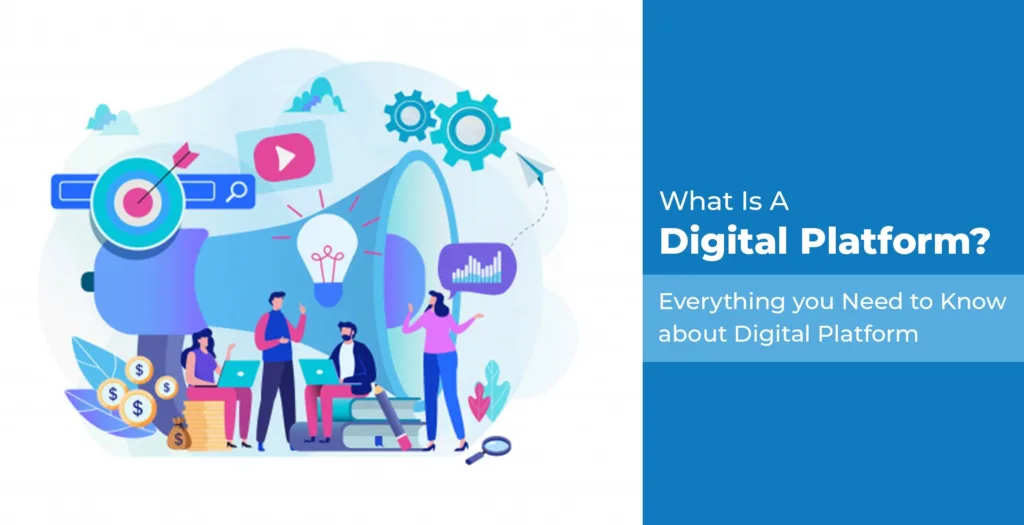What are the Benefits of Digital Platforms

In simple terms, it is a software solution that helps organizations to serve their products and services through online businesses to run their business effectively.
Building a Digital Platform can offer significant benefits to your organization, such as faster innovation, improved quality and reliability, reduced costs, and happier staff. However, it’s a complex undertaking that requires careful consideration of how it aligns with your digital strategy. In this article, we’ll explore some of the main benefits of a Digital Platform to help you determine if it’s right for your organization.
Faster innovation
A Digital Platform enables faster innovation through:
- Rapid time to market: By automating cloud setup and simplifying governance processes, a new Digital Service can be launched to customers within days.
- Frequent updates: With an optimal deployment pipeline, experiments in a Digital Service can be updated daily.
- Increased focus on business problems: By institutionalizing policies that cut across departments, processes can be streamlined, and people can focus on higher-value work.
- More business model opportunities: Friction-free, rapid launches of Digital Services allow you to trial different business models in new marketplaces.
Higher quality solution
A Digital Platform also provides a higher quality solution by:
- Reducing environmental issues: Automating configuration and infrastructure lowers the potential for environment-specific problems.
- Increasing deterministic test results: Centralizing automated test executors reduces opportunities for non-determinism in test suites.
- Faster rollback: An effective rollback system with health checks means deployment failures can be fixed quickly.
Increased reliability
A Digital Platform provides increased reliability through:
- More operable services: Providing logging, monitoring, and alerting out of the box increases the operability of Digital Services and helps users to quickly discern abnormal operating conditions.
- Graceful degradation: Implementing circuit breakers and bulkheads on the wire for third-party systems allows Digital Services to gracefully degrade on failure.
- Improved business continuity: Automating the entire platform infrastructure in the cloud creates new business continuity options.
Improved ways of working
A Digital Platform promotes improved ways of working by:
- Experimenting with policies: Cutting across departments means new policies can be forged in inceptions, Chaos Day testing, secure delivery, and more.
- Driving new practices: Creating enabling constraints in user journeys can drive the adoption of new practices, such as restricting shared libraries to encourage decoupled domains for Digital Services.
- Simplifying processes: Establishing meaningful Service Level Objectives with an automated alerting toolchain can make production support easier to set up.
Advanced technology
A Digital Platform takes advantage of the most advanced technology through:
- Using the best available technologies: Standardizing cloud building blocks means the best available technology stack can be provided to Digital Service teams.
- Traffic optimization: Surfacing self-service, elastic infrastructure means Digital Service teams can easily optimize for fluctuating traffic patterns without significant costs.
- Zero downtime updates: Consolidating service runtimes means functional updates can be continually applied with zero downtime for Digital Services.
Reduced costs
A Digital Platform offers reduced costs through:
- Economies of scale: Centralizing the Digital Service lifecycle means economies of scale can be achieved, as more Digital Service teams can be added without incurring repeat buy/build costs.
- Easier cost management: Centralizing self-service touchpoints for automated infrastructure allows infrastructure costs to be visualized and closely managed.
- Positioning security specialists in Digital Platform teams means security threats can be more easily identified, and Digital Services can quickly receive security updates.
Happier & more productive people
Ultimately, a Digital Platform creates a happier and more productive workforce through:
- Lower cognitive load: Abstracting away the Digital Service lifecycle reduces staff’s cognitive load, reducing lead times to less than 24 hours for a new joiner, a mover between teams, a leaver, or a new Digital Service team.
- Easier to identify talent needs: Splitting business domains into Digital Services highlights which domains are true business differentiators and require the most talented engineers




It’s good to know
Very Nice.